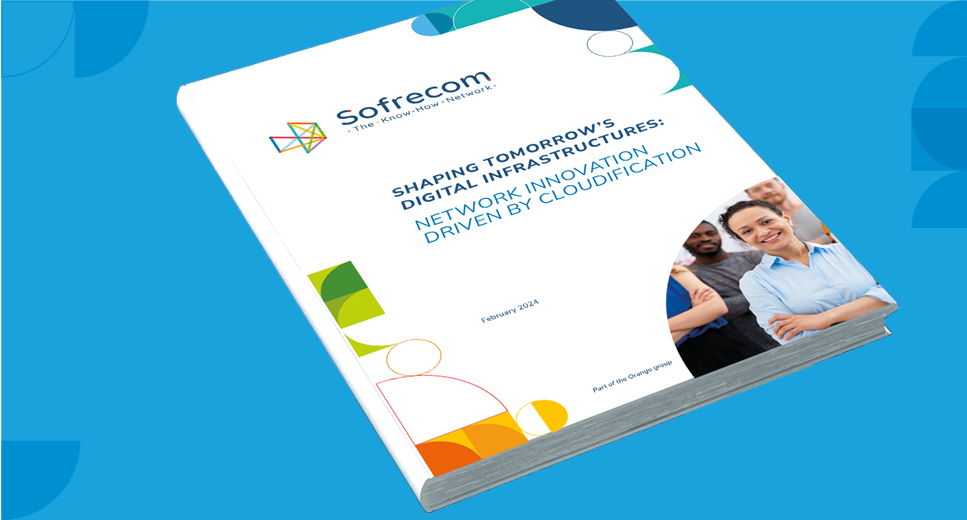
The virtualization and cloudification are two technological levers for transforming operators under economic pressure.

The telecommunications sector is facing existential challenges. Traditional monolithic ecosystem where key components are vertically integrated and come from a single vendor has led to a closed environment, where telcos were locked into vendors, caped in terms of services and had low visibility of their network operations. They cannot harness the power of the data/ai revolution and unleash innovative services and new revenue streams.
Challenges of the Telcos Sector
Indeed, the share of TelCos in global ICT market cap has been drastically decreasing over the past 20 years, reflecting a major competitive recomposition which has put traditional business models under stress. This has been amplified by the Hyperscalers who have managed to come out on top because they succeeded in first building the (virtual) infrastructure which allow them to supply their various services today. In a digital world, This traditional model being no more viable, operators are, forced for a deep transformation and openness where innovation cycles accelerate and require greater flexibility and dynamism than hardware-based appliances allow.
Consequently, Telecom operators are experiencing a technological evolution towards IT that involves a major transformation of their infrastructures: first virtualized, the network now tends to be cloudified with the emergence of tools such as containerization, orchestration, or APIs, and will continue to evolve with the democratization of tools using artificial intelligence. This will also transform operators’ revenue models, enabling them to deploy new personalized services faster, more efficiently and more securely.
In the same way that applications are supported by dynamically configurable and fully automated cloud environments, virtualized network functions allow networks to be agile and capable to respond automatically to the needs of the traffic and services running over it.
This white paper will shed the light over the challenges, the impact and the transformation requirements of this long journey towards a software-based operator.
Before delving into details, it is important to come back to some of the concepts governing this transformation and elucidating the interlock existing between them.
Network Function Virtualisation (NFV)
This is a network architecture concept developed since the 2010s in which the hardware of the network device is replaced by virtual machines (VMs). In this architecture, network services that were traditionally run-on proprietary hardware are grouped on standardized hardware.
NFV is expected to help operators reduce the time to deploy (virtualised) network functions (VNFs) and services and their total cost of ownership, thanks to automation and economy of scales brought by cloud computing technologies. The industry is moving towards this technology, following a multi-step approach. NFV is expected to help operators reduce the time to deploy (virtualised) network functions (VNFs) and services and their total cost of ownership, thanks to automation and economy of scales brought by cloud computing technologies. The industry is moving towards this technology, following a multi-step approach.
Software defined network (SDN)
is a networking paradigm where networks can be dynamically driven by applications Applicable to all network layers (from Layer 0 to Layer 3) Using standard interfaces
(to receive orders, and then to program the network dynamically) by externalizing the control plane While network virtualization allows operators to segment different virtual networks within a single physical network, software defined SDN offers a new way to control/ program networks through centralized server. The idea is to manage all resources through a centralized interface and thus reduce the impact of network heterogeneity. These technologies answer both a need for automation and agility in network management processes, but also a need to open network equipment to third party applications to accelerate innovation.
SDN and NFV together
NFV and SDN are two important pillars of telecom cloudification, and are closely related, independent, yet complementary and mutually beneficial technologies. Network functions can be virtualized and deployed without SDN technologies, and non-virtualized functions can be controlled by SDN.
Disaggregation
Disaggregation is the move from proprietary and closed solution, towards totally decoupled and open components which are re-combined to form a complete solution,
with orchestrators. Software components (some opensourced) are used with APIs.
Disaggregation of network functions is a long-lasting ongoing transformation of the Telco ecosystem. For more than 10 years, network functions are being cut into smaller pieces, moving from monolithic, closed and proprietary implementations to fully decoupled, open components which are re-combined to form new network architectures. This dramatic change in the industrial ecosystem provides operators with more flexibility to build Telco services, and raises new opportunities to optimize investments, lower prices thanks to increased competition on each component, and renew the industrial strategy (more innovation, new players, and evolution of the value chain).
Cloud native
Cloud native technology and architecture refers to an approach that enables the development and deployment of applications in the cloud and open environment using containerization, microservices architectures, and orchestration tools like Kubernetes.
Each service performs a specific function and can be developed, deployed, and scaled independently as well as on board any infrastructure (telco, private or public) and container platform. This approach promotes modularity and makes it easier to maintain and update individual components without affecting the entire system.





